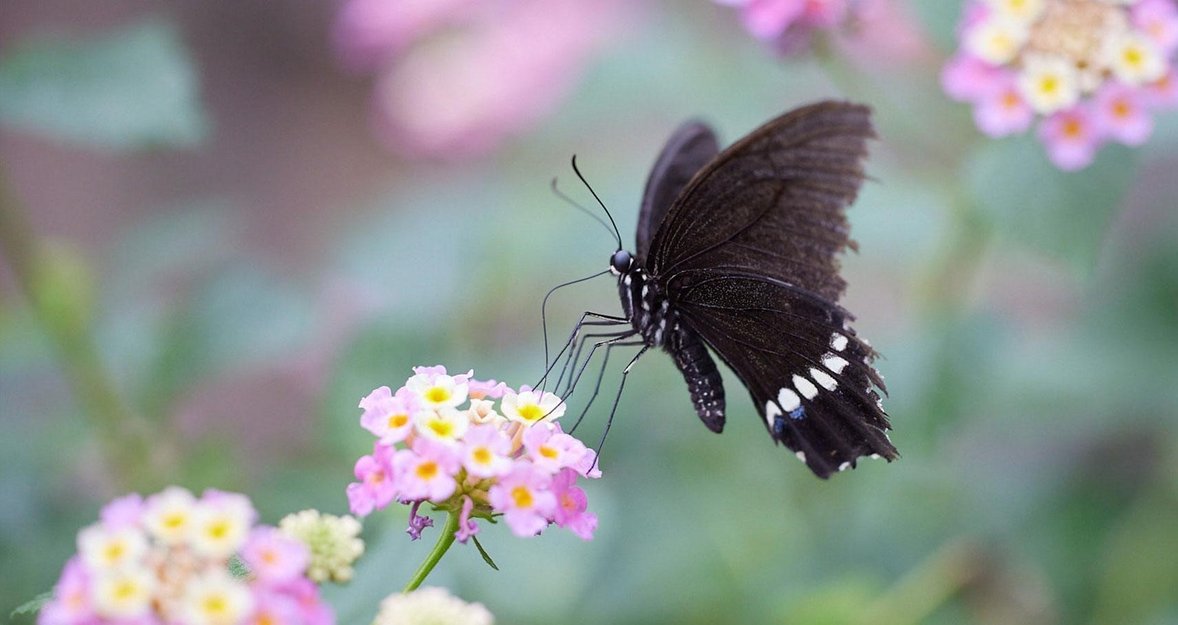The Art of Butterfly Photography: Pro Techniques Unveiled
July 15, 2024

Unlock the art of butterfly photography with expert tips that will transform your shots from simple to spectacular.
Do you face these common challenges when photographing butterflies?
You focus solely on capturing the butterfly, resulting in repetitive compositions.
Your photos resemble picture books and need more visual appeal.
You struggle to include the surrounding environment in your shots effectively.
If you answered yes, then you’re in the right place. This article will introduce techniques that provide creative solutions to these issues. By using these methods to guide your ideas, you can capture unique and striking butterfly photographs unlike any you've taken before.
Advanced yet easy-to-use photo editor
Get Luminar Neo Now1. Working with Light
When photographing butterflies, which are often captured in natural light, it's crucial to be mindful of the sun's direction. Here are three tips for leveraging sunlight to enhance your photos:
Tip 1: Let the Sun Shine through the Wings
Aim to photograph the butterfly wings against the light. This technique allows the wings to catch the light and sparkle mysteriously
When attempting this shot, the positioning of the sun, the butterfly, and yourself is key. Try to find an unobstructed spot directly behind the butterfly, as demonstrated in the example photo. It also helps to stay low and angle your camera slightly upward. Since you can't control where the butterfly moves, patience is essential. Move around to find the best spot and wait for the perfect lighting conditions. Here's an example of a butterfly laying eggs:
Although ecological photos like this can sometimes resemble illustrations in a picture book, using backlighting to let the wings sparkle transforms the image, adding a layer of mystery. Consider experimenting with backlighting in various settings to see how it changes your photos.
Tip 2: Enhance Colors in Direct Sunlight
 For butterflies that boast vibrant wing colors and patterns, capturing them in direct sunlight is highly recommended. Direct light can bring out the vividness of their colors, making for a striking photograph. However, overly intense sunlight might wash out the colors, making them appear pale.
For butterflies that boast vibrant wing colors and patterns, capturing them in direct sunlight is highly recommended. Direct light can bring out the vividness of their colors, making for a striking photograph. However, overly intense sunlight might wash out the colors, making them appear pale.
For best results, try shooting on a cloudy day or when the sun is partially obscured by clouds. These conditions can soften the light, helping to enhance and saturate the colors without the harshness of direct sunlight. Mastering this technique can also encourage you to venture out more often, even on overcast days, increasing your opportunities to capture beautiful images.
Tip 3: Incorporate the Sun into Your Composition
To dramatically alter the impression of your photos, consider integrating the sun directly into your composition. This can add a bold, dramatic effect.
The photo below captures a butterfly resting in the shade, with sunlight filtering through the leaves above.
How to Capture Sunrays:
Adjust Your Aperture: Use a smaller aperture (higher F-stop) to enhance the sun's rays in your photo. Setting the F-stop to 11 or higher is generally effective.
Manipulate Sunlight: Block the sunlight using trees or leaves to create a pinpoint light source. This technique helps to form beautiful light streaks without overpowering the scene.
Even on a clear day, direct sunlight won't yield the most aesthetically pleasing light streaks. Look for spots where the sun can be partially obscured by foliage, allowing just a sliver of light to pass through, creating a focused beam.
Photographing butterflies in motion with the sun in frame can be tricky. It’s easier to start with butterflies that are at rest. If you spot a butterfly, experiment with different angles to effectively incorporate the sun into your shot.
Tip 4: Try Post-Processing
Capturing butterflies with the sun in your composition can spark numerous creative ideas. However, backlighting might leave your subject, like a butterfly's wings, a bit too dark, as seen in the example below.
You might think the photo would look better if the butterfly were more brightly illuminated. In such cases, I recommend using Luminar Neo's "Relight" function. It utilizes AI to detect the subject's position within the frame and adjusts the brightness accordingly. Specifically, you can enhance the brightness of areas closer to the camera.
For this photo, I increased the "Brightness Near" to brighten the butterfly's wings, which are in the foreground. Here's the photo after using Relight:
This simple adjustment has effectively brightened the butterfly’s dark wings, counteracting the effects of backlighting. If you encounter similar challenges with dark photos due to backlighting, give this feature a try. It can make a significant difference in highlighting your subject.
2. Using Blur for Expression
Composing a photo with bokeh can add a sense of depth to your images. When aiming for this effect, consider the following tips:
Set the F-stop to a value close to wide open (a smaller number).
Adopt a lower shooting posture to capture a unique angle.
Plan which elements in the foreground you want to blur intentionally.
You might worry that shooting with a wide-open aperture will blur your subject, but this typically isn’t an issue. For instance, the photo below was taken at an F-stop of 2.8, wide open.
Bokeh is influenced by several factors beyond just the aperture setting:
The distance between the camera and the subject.
The distance between the subject and its background (or foreground).
The greater the distance between the camera and the subject, the less pronounced the blur. When photographing butterflies—often done from a distance with a telephoto lens—even with a wide-open aperture, the butterflies remain sharply in focus.
Exclusive Tools of Endless Possibilities in One AI Editor
EXPLORE NOW!If the subject is clear but the background and foreground are distanced, both will appear blurred, as seen in the photo below. This photo was taken with the aperture at F2.8. 
There was a substantial distance between the background and the subject, causing the background to blur significantly. To enhance this effect, I placed leaves close to the camera to blur them intentionally.
An important technique in taking such photos is to maintain a low angle. Positioning your camera to capture the butterfly from the side facilitates the use of surrounding flowers for foreground blur. Consider what you want to blur and adjust your and your subject's position accordingly.
Don’t hesitate to experiment with bold foreground bokeh. In the photo below, I positioned the camera so that the foreground blur and the butterfly overlapped, creating a stunning effect.
The final photo, where the butterfly overlaps with the blurred foreground, showcases a fantastical image enveloped in greenery. By consciously using bokeh in your compositions, even familiar scenes can be transformed into something extraordinary.
3. Enhancing Photo Creativity with Backgrounds
 Many photographers prefer a clear and clean background, as shown in the photo above, for its beauty and simplicity. However, this common choice can sometimes lead to visually similar results that lack distinctiveness.
Many photographers prefer a clear and clean background, as shown in the photo above, for its beauty and simplicity. However, this common choice can sometimes lead to visually similar results that lack distinctiveness.
To ensure your images stand out, it's crucial to consciously incorporate the background into your compositions. Below, we explore several tips that will help you integrate this element more effectively into your photography.
Tip 1: Create Backgrounds by Controlling the F-stop
Even with the same background, adjusting the F-stop (aperture) can drastically alter the image's impression. Here's how you can use this setting to shape your photos:
For a Detailed Background
If your goal is to showcase the background, increase the F-stop. The image below was taken at F16. At this setting, every detail from the butterfly to the plants in the background is in sharp focus. This approach is ideal when you want to emphasize the environment surrounding your subject.
For an Atmospheric Background
Conversely, if you prefer to create a more atmospheric photo with a blurred background, opt for a smaller F-stop. The next photo demonstrates this technique, taken with a lower F-stop. The background's blur creates a dreamlike effect, and the shallow depth of field highlights only a part of the butterfly's wings. This selective focus draws the viewer's eye to the intricate details of the feathers, allowing the background to subtly enhance the subject's beauty.
Using different F-stop settings can significantly impact how the background interacts with your main subject, either by bringing it into clear view or by artistically blurring it to enhance the subject's allure.
Tip 2: Change the Background by Changing the Angle
Even in the same location, a slight shift in your shooting angle can transform the background and give your photo a distinctly different feel. Consider the scenario illustrated below. Here, the background features a white building wall and green plants:
I positioned the butterfly with the greenery centered behind it and the white walls framing this green space. The white creates a frame-like effect around the green, enhancing the composition's visual impact:
Next, I altered my angle slightly to use only the white wall as the background. The result resembles a painting on a white canvas, where the absence of other colors draws all attention to the butterfly's vibrant colors. This setting is particularly effective for highlighting the beauty of the butterfly’s colors and shapes:
These photos depict the same butterfly at the same spot but convey entirely different atmospheres, achieved by merely adjusting the shooting angle. When you encounter a butterfly, consider what you wish to express through your choice of background before you shoot.
Summary
I've given you tips on how to take your butterfly photos to the next level. When shooting, keep the following in mind:
Consider the Sun’s Direction: Capturing the butterfly with backlighting can make its wings glow mysteriously, while direct sunlight highlights the vibrant colors. Think about what you want to showcase when selecting the sun’s direction. Including the sun in your composition can also add a dynamic element to your photos.
Use Blur Expression: Bokeh can be used to create a blurry background or to incorporate foreground elements in a soft focus. It's an exciting way to blend the butterfly with bokeh, covering the entire photo in a dreamlike haze. Decide what elements to blur and how to position them relative to your subject.
Create Pictures with the Background in Mind: The choice of background is crucial. Whether you change the aperture or the angle, even slight adjustments can dramatically alter the impression your photo conveys. Consider whether you want the background to convey the environment, create an atmosphere, or emphasize the butterfly’s colors with a stark white backdrop.
Use these tips as starting points to infuse your own creativity into your photographic projects. By slightly altering your perspectives, you can create a myriad of variations that enhance the beauty and uniqueness of your butterfly images.





